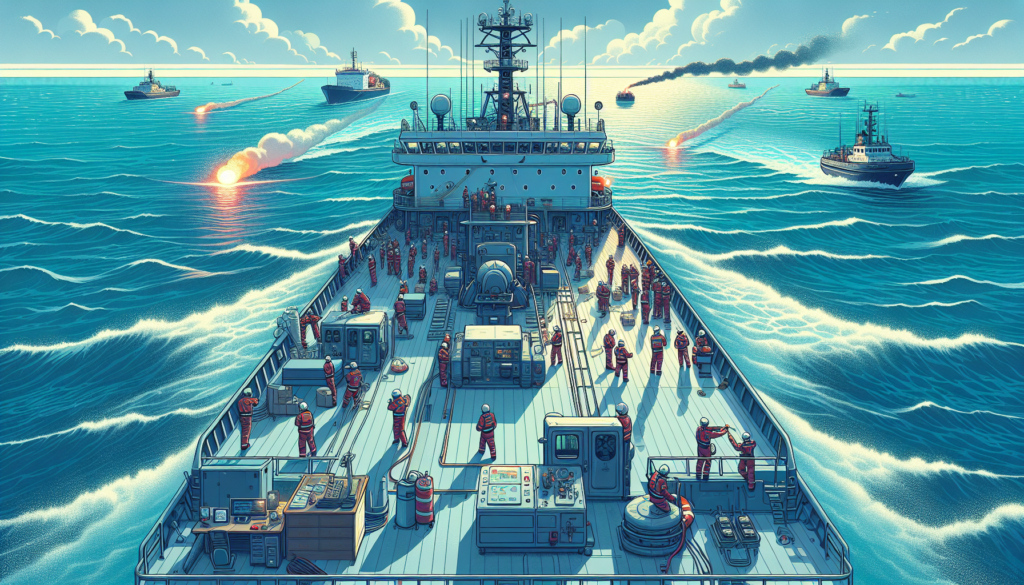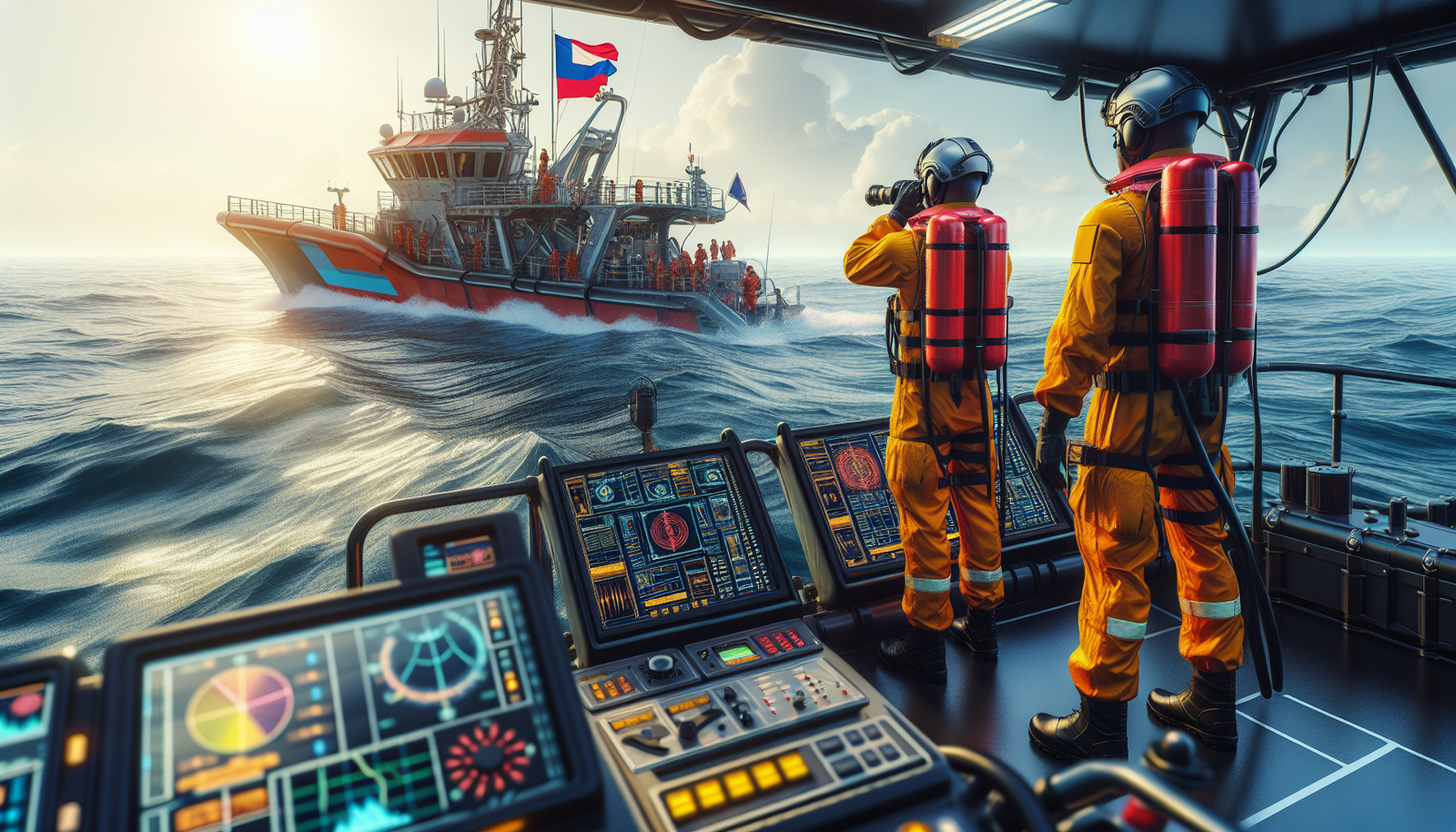Navigating the staggering vastness of the ocean, you likely understand the inherent risks and challenges entailed. Your voyage becomes an intricate dance with nature, where the rhythms of waves set the tempo while you, as the skipper, cast your vessel through the tumbles intricately. “Best Ways To Respond To Distress Signals On The Water” aims to be your compass in those daunting situations, guiding you adeptly on how to interpret and respond to emergencies on this infinite blue stage. Keep your tides of worry at bay, as you are about to equip yourself not just to stay afloat, but to be a potential savior in the unruly waters.

Understanding Distress Signals on Water
Nautical reckoning is an art of its own and, as an enthusiast, you may be familiar with the basics – navigation, steering, anchoring, or tying the right knots. These skills are essential, but the capability to comprehend and react to distress signals can be the lifesaver.
What are distress signals
Distress signals are calls for help or signs of emergency in a perilous situation. And, on water, these usually signify a vessel in trouble. They are a way for sailors or seafarers to share their plight with others who might come to their aid.
Importance of recognizing distress signals
Recognizing distress signals is the first step to getting help to a vessel in jeopardy. Your keen senses and understanding could be the difference between life and death during emergencies. Whether you are an experienced mariner or just out for a playful sail, knowing these signals is a must-have skill.
Common types of distress signals
There are numerous distress signals used on water. Some common ones include visual cues like flares, flags, bright signals, or smoke to more audible cues like bells, horns, calls for help, or radio signals like SOS.
## Visual Distress Signals on Water The open water is vast and often quiet. Thus, visual distress signals can be the quickest and most effective means of alerting others to a problem.
Flares: types and usage
Flares are one of the most common visual distress signals seen on water. They can be handheld or aerial and emit bright red light or smoke. Knowing how to use each type of flare properly can be the difference between being rescued or remaining adrift.
Smoke signals
Sending up smoke signals is another effective means to alert nearby vessels of your emergency. Thick, black smoke can be easily seen against the bright sky and can be recognized from a distance. Make sure to produce copious amounts to maximize visibility.
Flags and other visual signals
Flags, like the Nautical flag ‘N’ or ‘C,’ when flown upside down, signal distress. Similarly, brightly colored cloths, mirrors, strobe lights, or even arm signals can be used to convey emergency.
How to recognize visual distress signals
Recognizing these signals is crucial. Keep an eye out for unusual colors in the sky, irregular smoke patterns, or erratic movements of lights. Become familiar with distress flags to identify them easily.
Sound Distress Signals on Water
Sometimes, due to poor visibility, sound signals can be the most effective distress calls.
Use of horns and bells
These can be used to signal distress when the visibility is poor due to fog, nightfall, or other conditions. Continuous sounding of these can indicate an emergency. ### Shouting or screaming The most basic form of distress signal – it is a clear and unmistakable alert of emergency. ### Radio calls for help Radio distress calls, often automated, can send crucial location data and improve the chances of timely rescue. ### Understanding the sound distress signals Understanding these signals requires keen listening. Continuous, irregular, or panicked sounds usually indicate a distress situation.

Radio Distress Signals on Water
Radios are an integral part of any vessel’s safety equipment. They play a vital role in communicating distress signals over long distances. ### Understanding SOS signals ‘SOS’ is the International Morse code distress signal, originally introduced by German laws in radio communication. It is recognized globally and signals grave and imminent danger. ### Mayday and Pan-pan calls ‘Mayday’ is used on radio to signal extreme distress and a need for immediate assistance, while ‘Pan-pan’ is used when the situation is serious but not urgent. ### Procedure for making radio distress calls It’s crucial to follow a structured protocol while making a radio distress call. Always transmit your vessel’s name, location, nature of distress, type of assistance required, and number of persons on board. ### Response to radio distress signals Upon receiving a distress signal, acknowledge it and inform the coastguard or rescue authorities promptly. It’s also essential to stay tuned for further communication.
## Importance of Immediate Response Responding immediately to distress signals can make a significant difference in the outcome of the situation. ### Why quick action matters The sooner assistance arrives, the higher the chance of averting tragedy. A rapid response can reduce exposure to harsh sea conditions and increase survival rates. ### Potential risks of late response Delayed or non-existent responses can lead to worsening of the distressed vessel’s condition, loss of lives, or even the vessel going missing. ### Role of quick response in saving lives Quick intervention can provide immediate relief to the distressed, increase their chances of survival, and potentially save many lives.
Proper Communication with Distressed Vessel
When you’re involved in a rescue operation, effective communication is vital. ### Role of clear communication Clear communication helps in understanding the nature of distress and deciding on the appropriate response. It can ensure that the right message gets through and reduces confusion. ### Proper usage of radio communication in distress situations Use concise, clear, and precise language while communicating with the distressed vessel. Follow the standard protocol and avoid unnecessary dialogue. ### Important information to extract Essential information includes the exact location of the vessel, nature of distress, number of people on board, availability of life-saving equipment, and any immediate medical needs.
Assessing the Situation
A correct assessment of the situation forms the base for a successful rescue operation. ### Importance of correctly assessing the situation A correct assessment can guide you in attracting the right assistance, preparing rescue boats or equipment, and strategizing the rescue plan. ### Safety considerations Always consider your safety and that of your crew before venturing into a rescue. Ensure that weather conditions and sea are safe enough for a rescue operation. ### Determining the level of assistance needed Assess the severity of the situation and decide on the type of assistance needed – whether it’s to provide first-aid, tow the vessel, or call for professional help.
Providing Assistance on Water
Once you’ve made your assessment and taken necessary precautions, it’s time to provide assistance. ### First aid and medical assistance Respond with first aid or medical assistance; stabilize the injured and help them keep calm. ### Towing or salvaging a distressed vessel If the vessel is stable but unable to move, you could attempt to tow them to safer waters. Ensure to approach with caution to avoid further mishaps. ### Rescue and evacuation procedures For more serious emergencies, evacuation may be required. Ensure to remain calm, methodical and swift – every second count.
Alerting Rescue Authorities
A crucial step in responding to distress signals is alerting the right authorities. ### When to alert authorities If the distress situation is beyond your capability, make alerting authorities a priority. ### How to alert authorities Use your radio or other available means to inform local coastguards or rescue agencies. Provide them with accurate information. ### Information to provide to authorities Ensure to provide correct and concise information about the nature and location of distress, the condition of persons on board, and the exact position.
Safety Precautions and Protocols
While helping a vessel in distress, always remember to prioritize safety. ### Safety-first approach The safety of yourself and your own crew should never be compromised during a rescue. Do not take unnecessary risks and always aim for minimum exposure to danger. ### Follow international and local safety protocols International and local safety protocols exist for a reason. Strictly adhere to these rules to keep everyone safe. ### Maintaining safety while helping Constantly reassess the situation, make sure to use all safety equipment, and adhere to safety protocols. This approach ensures the well-being of everyone involved while providing help.
With the right knowledge and skills to interpret and respond to distress signals, you’d be well equipped to handle emergencies on the water. May your sails always be full and your sea-journeys safe and pleasant.

